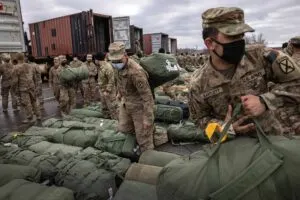Walking along the beach, one couldn’t help but notice the marvels of the ocean; the crashing waves, the cool and salty breeze, the birds flying over the horizon and ships sailing in the distance.
It is said that the Great Blue contains an entirely new world below its surface. It is now understood that we have only mapped 10% of the ocean floor while the rest is yet to be explored. Humans have more knowledge about the surface of the moon than the surface of the ocean floor. We don’t know what lies in its depths and what creatures left to be discovered.
While having a coastal line for a country certainly has its fair share of geopolitical merits, one thing that is often overlooked is the beauty of the waters and the life it hosts.
Declaring these regions as ‘Marine Protected Areas’ is just the initial step
Stretching approximately 990km in length, Pakistan’s waters are home to a variety of marine life ranging from tiny crustaceans the size of the pebble to the giant whales that migrate here to feed off planktons and shrimps. Fish in all shapes and sizes call our part of the Arabian Sea home. Tiny crabs scutter along the beach, hiding at the sight of any activity. Mangroves stand tall and firm along the mighty waves crashing on the coastline while migratory birds fly settle on its branches after a long flight.
Amongst all these beautiful creatures lies a tiny ecosystem along with its islands; the coral reefs. Coral reefs are seen along the Charna and Astola, two of the islands in Pakistani territories. After the 2004 tsunami, the coral polyps migrated to the nearest islands they could find, and once settled, they began to grow and form colonies. Soon after, fish and other creatures came and populated the colonies, and hence, Pakistan got to have its own little coral reef. Coral reefs contain the biodiversity of marine organisms, all living together as a single community.
There is huge potential for ecotourism and research that needs to be done in these fields
Corals are neither plants nor rocks but rather animals belonging to the group of invertebrates called Cnidaria. They form a hard skeleton over their bodies which protects their fragile bodies. A single coral may contain several tiny organisms living together in a well-defined skeleton formation. They form a symbiotic relationship with algae called zooxanthellae which provide food for the coral while in return, the coral body provides protection. About 25-30 different species of corals are seen in our reef, each providing a new and beautiful structure to the community. Some are tall and branching, and some are small and rounded, some appear fan-shaped, and some even look like the brain’s surface!
Apart from looking beautiful, coral reefs are a source of great benefit to all of us. They provide coastal lines protection from erosion and storms. They are home to several different types of fish and many invertebrates. About a quarter of all marine species reside in coral reefs. They are a source of income for local fishermen who hunt fish and other creatures.
While it is true that Pakistan’s reefs are still in their initial state of formation, there is huge potential for ecotourism and research that needs to be done in these fields.
Overfishing, marine pollution, and climate change have caused significant damage to our reefs, resulting in widespread bleaching, i.e., the algae inside the corals die off, leaving behind a dead skeleton. And with no life in these corals, the fish migrate to other places or die off. The entire ecosystem collapses in front of our eyes. It won’t be surprising that most people won’t know what a coral reef is, let alone that we have them in Pakistan.
Declaring these regions as ‘Marine Protected Areas’ is just the initial step. We must educate the local community about the coral reefs, how to preserve them, and how to practice safe fishing techniques without disrupting the local ecosystem. Also, we must give awareness to the general public about the importance of these reefs. Avoid littering the beaches when we go out should the number one priority. Preserving water, planting trees and recycling are among the few steps we can take as an individual to help save these reefs.
Humans have more knowledge about the surface of the moon than the surface of the ocean floor
We must be willing to preserve such a natural and national asset and educate the masses about the significance of these creatures. Otherwise, their destruction will ultimately cause our own demise in the long term.
Imagine a war-struck city, empty, barren, and lifeless. Everyone died off and left behind the wasteland of broken buildings and empty streets. That’s what is happening to our reefs. Let’s work together to help save these communities while there is still hope left before our little gardens perish forever. “We need to respect the oceans and take care of them as if our lives depend on it because they do.” – Sylvia Earle



